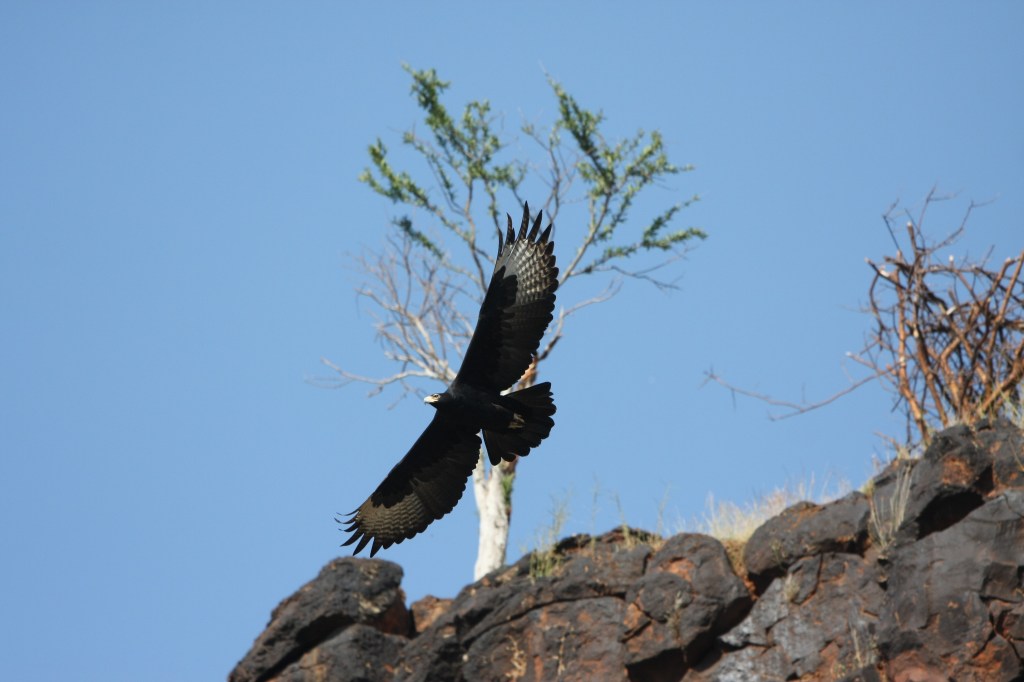
Verreaux’s Eagle is a large bird of prey that is highly specialised, with its life history and distribution revolving around its main prey of rock hyraxes and preferred habitat of hilly and mountainous terrain. It is wide spread throughout Kenya, especially around Samburu game reserve, Lake Baringo, Lake Magadi and Tsavo West national park. It feeds primarily on rock hyraxes but it also preys on other animals such as small mammals, birds and reptiles. Its populations are stable and have been less impacted by human encroachment due to the isolation and the inaccessible terrain of its habitat.
When perched or at rest adult Verreaux’s Eagles are entirely black in appearance, except for a white ‘V’ above the wings on the back and yellow feet (talons) and cere. In flight, the unfolded wings expose a white rump and whitish panels on the outer wings. The wings have a distinctive shape that is broad in the middle and tapering at the tips. Sexes are similar, but females are slightly larger than males. Juveniles have a yellow-brown plumage and the head and back of the neck have a distinctive reddish-brown colour. The face and throat are black. Juveniles achieve adult plumage in 4 years. The photos appearing here were all taken in western cliffs of Lake Baringo.





